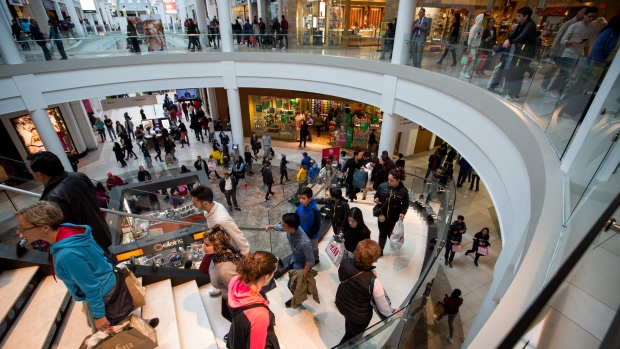Jun 14, 2019
U.S. retail sales post broad rise, prior month revised to gain
, Bloomberg News

The value of overall sales rose 0.5 per cent from the previous month after a 0.3 per cent increase in April that was revised from a decline, according to Commerce Department figures released Friday. The median forecast in Bloomberg's survey of economists was for a 0.6 per cent gain.
Sales in the “control group” subset, which some analysts view as a more reliable gauge of underlying consumer demand, climbed 0.5 per cent, topping projections, after an upwardly revised 0.4 per cent gain. The measure excludes food services, car dealers, building- materials stores and fuel stations.
The pickup signals steady wage gains and the lowest unemployment in a half-century are supporting consumer spending, which accounts for most of the U.S. economy, amid signs of weakness in other indicators. Investors have been expecting the Fed to lower borrowing costs in July as President Donald Trump's trade war weighs on growth, though the central bank may wait for clearer evidence of a slowdown before making such a move.
Chairman Jerome Powell will give more insight into the Fed's thinking at a press conference Wednesday following a two-day meeting of policy makers.
Online Shopping
Eleven of 13 major retail categories increased, led by a 1.4 per cent gain in nonstore retailers, the most since January. That includes online shopping destinations such as Amazon.com Inc. Electronics and appliance stores as well as sporting goods, hobby, musical instrument and book stores recorded 1.1 per cent increases.
Filling-station receipts increased 0.3 per cent, the report showed. The figures aren't adjusted for price changes, so the higher retail sales suggest increased demand as fuel prices fell. Consumer- price index data this week showed gasoline costs dropped 0.5% in May from the prior month.
Sales at automobile and parts dealers advanced 0.7 per cent after decreasing 0.5 in the previous month, revised upward from a 1.1 per cent drop. Industry data from Wards Automotive Group previously showed unit sales rebounded in May.
Excluding automobiles and gasoline, retail sales increased 0.5 per cent after a 0.3 per cent gain the previous month, which was revised from a decline.
The only sectors to show declines were food and beverage stores, with a 0.1 per cent drop, and miscellaneous retailers, with a 1.3 per cent decrease. At the same time, the April figure for miscellaneous stores was revised to a 1.7 per cent increase from little changed.
Get More
-Estimates in the Bloomberg survey for total retail sales ranged from a gain of 0.3 per cent to 1.2 per cent.
-The retail-sales data don't capture all of household purchases and tend to be volatile. Personal-spending figures, which also include services, will offer a fuller picture of U.S. consumption in data due at the end of the month.